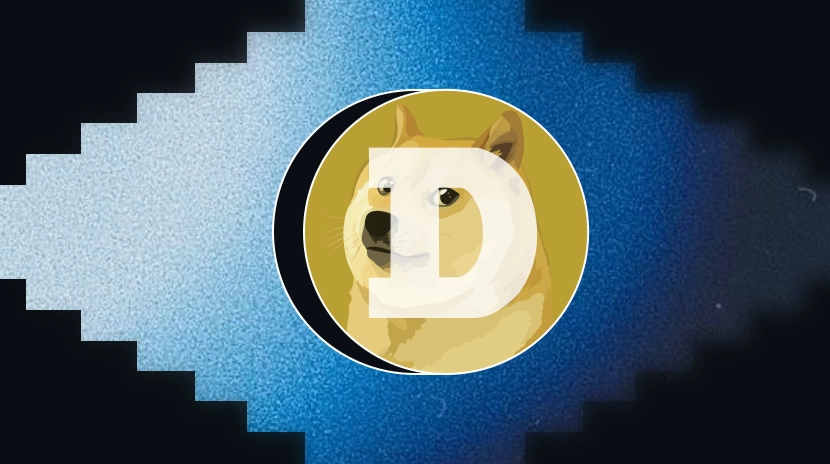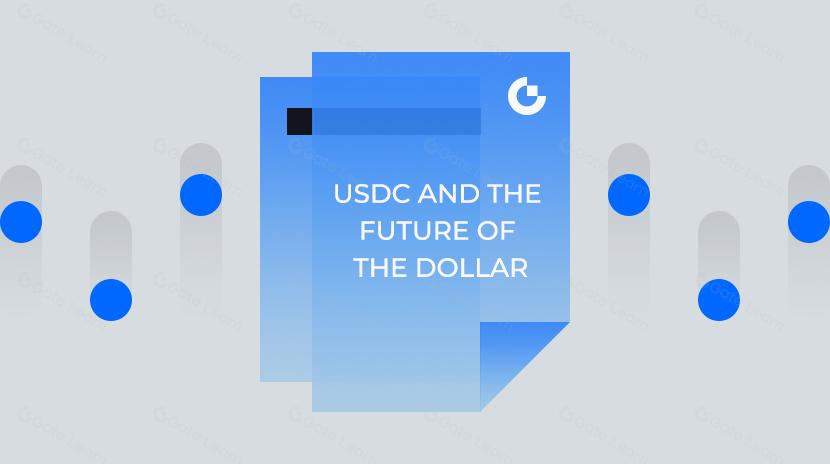Дослідження Gate: Звіт з фінансування промисловості Web3 березень 2025 року
Абстрактний
- На основі даних Cryptorank станом на 2 квітня 2025 року веб-індустрія Web3 завершила загалом 137 раундів фінансування в березні 2025 року на суму $5.07 мільярда.
- Обсягові раунди фінансування понад 100 мільйонів доларів становили загалом 4,147 мільярда доларів, що складало 81,79% від загальної суми, свідчить про те, що капітал все більше концентрується в декількох великих транзакціях, відзначаючи зростаючий ефект Меттью на ринку.
- Сектор CeFi очолив з фінансуванням у розмірі 4 мільярдів доларів, відстаючи від інших секторів. Послуги блокчейну та соціальні сектори слідували з фінансуванням у розмірі 342 мільйонів та 293 мільйонів доларів відповідно.
- На ринку у березні все ще переважали невеликі та середні раунди фінансування, продовжуючи тенденцію до 'інвестицій на ранній стадії + концентровані ставки на топ-проекти'. Раунди фінансування менше 10 мільйонів доларів становили майже 70%, в той час як проекти, які отримали понад 50 мільйонів, складали лише 9,68%.
- Ландшафт фінансування у березні відображав стратегію «широкого розташування + важких ставок», де раунди на початковому етапі складали більшість фінансованих проектів, тоді як раунди серій A/B залучили великі інвестиції, що свідчить про сильне визнання капіталу для зрілих проектів.
- a16z CSX очолив найактивнішу інвестиційну фірму у березні, з 10 інвестиційними проектами, зосередженими на блокчейн-сервісах, публічних ланцюгах та інших інфраструктурних і програмних застосунках.
Огляд фінансування
Згідно з даними Cryptorank на 2 квітня 2025 року, промисловість Web3 завершила загалом 137 раундів фінансування у березні 2025 року, загальна сума яких становила 5,07 мільярда доларів. [1]
Порівняно з лютим 2025 року, загальна сума фінансування зросла на 348,67%, тоді як кількість раундів фінансування трохи зменшилася на 5,52%. Порівняно з попереднім роком, загальне фінансування зросло на 302,38%, тоді як кількість раундів фінансування скоротилася на 21,71%.
В цілому обсяг фінансування за цей місяць досяг найвищого рівня з квітня 2022 року, переважно завдяки великим раундам фінансування та основним угодам про придбання, які відбулися вперше. Зокрема, інвестиційна фірма MGX з Абу-Дабі вклала $2 мільярди в Binance, тоді як Kraken придбав американську ф’ючерсну торговельну платформу NinjaTrader за $1,5 мільярда. Ці дві угоди склали 69,03% від загальної суми фінансування, виступаючи ключовими факторами за підтримку зростання фінансування цього місяця.

На основі аналізу десяти найбільш важливих проектів фінансування у березні 2025 року можна виявити наступні тенденції: [2]
- Злиття та поглиблення ринкової консолідації прискорюються: M&A активність була ключовою особливістю фінансового ландшафту цього місяця. Серед 10 найбільших угод про фінансування, придбання NinjaTrader та Napster на суму $1.77 мільярда, що становить 33.66% від загального обсягу фінансування у березні. Цей тренд відображає попит ринку на інтеграцію ресурсів та розширення частки ринку, що сприяє становленню та розвитку галузі.
- Більш гнучкі методи фінансування: MoonPay raised funds through debt financing, while Walrus conducted a private token sale. These different approaches highlight how projects are strategically selecting the most suitable financing methods based on their growth stage and capital needs.
- Стратегічні інвестиції, що стимулюють зростання: Проекти Web3 використовують стратегічні інвестиції та партнерства для розширення свого бізнесу та поглиблення проникнення на ринок. Приклади включають фінансування від Binance BNB та Національної криптовалютної асоціації (NCA). Поза допомогою проектам швидко побудувати ринкове визнання та користувацьку базу, ці інвестиції сигналізують про збільшену участь з боку загального капіталу, підвищуючи ринкову впевненість та прискорюючи глобальне прийняття та регуляторну відповідність.
- Постійний інтерес до зрілих проектів Web3: Після-спискових раундів фінансування Canaan та Metaplanet свідчать, що інтерес інвесторів до встановлених компаній Web3 залишається сильним, оскільки вони продовжують шукати інвестицій у більш масштабні, більш дорослі підприємства.
Загалом великі раунди фінансування, що перевищують 100 мільйонів доларів, склали 4,147 мільярда доларів у березні, що становить 81,79% від загальної суми. Виключаючи ці великі угоди, залишкові події фінансування разом зібрали лише 923 мільйони доларів, підтверджуючи зростаючу концентрацію капіталу в декількох високоцінних транзакціях та зростаючу важливість ефекту Меттью на ринку.

Згідно з даними Cryptorank, фінансування у березні 2025 року в основному було сконцентроване в секторах CeFi, блокчейн-сервісів, соціальних та інфраструктурних. Наприклад, фінансування в соціальному секторі показало значний ріст, що потенційно сигналізує про відновлення ринку. Ключові спостереження включають:
- Централізовані фінансові послуги та послуги блокчейну лідирують у фінансуванні: Сектор CeFi домінував із 4 мільярдами доларів фінансування, що далеко перевищує інші сектори, тоді як послуги блокчейну слідували з 342 мільйонами доларів. Це було в основному обумовлено зростаючим зацікавленням традиційних фінансових установ у таких областях, як криптовалютне утримання, платформи торгівлі відповідно до вимог, і похідні послуги (наприклад, придбання бірж та продукти управління активами банківського класу), що відображає постійний ринковий інтерес до централізованої фінансової сфери та послуг блокчейну.
- Стійкий ріст в інфраструктурі та ознаки відновлення у соціальному секторі: Сектор інфраструктури блокчейн забезпечив фінансування на суму $246,8 мільйонів, що свідчить про стійкий оптимізм ринку щодо фундаментальних інновацій технологій, зокрема в модульних архітектурах та міжланцюжковій взаємодії. Тим часом соціальний сектор посів третє місце з $293 мільйонами, що свідчить про сильне відновлення після сповільного початку року—різке зростання з $8,5 мільйона в лютому—показує, що довіра інвесторів до цього простору може відновлюватися.
- Зменшення інвестиційного ентузіазму до DeFi та GameFi: Сектор DeFi зібрав $93.08 мільйона, тоді як GameFi забезпечив $69.05 мільйона, відображаючи зменшений інтерес інвесторів до блокчейн-ігор та інновацій у сфері DeFi. Це може бути пов'язано з пошуком стійких моделей прибутковості в цих секторах.
- Розходящіся тенденції в секторах рівня застосування: Соціальний сектор посів третє місце з фінансуванням у розмірі $293 мільйонів, в той час як сектор NFT зібрав лише $5 мільйонів, продовжуючи своє зниження з 2023 року. Це свідчить про значне послаблення інтересу до ринку NFT, з переміщенням капіталу на користь проектів з практичними застосуваннями. Поза PFP (профільні зображення) NFT сектору потрібно досліджувати більше інновацій, спрямованих на корисність, щоб привернути увагу ринку та фінансування.

На основі даних з 93 опублікованих раундів фінансування у березні 2025 року ринок залишався під контролем невеликих та середніх раундів фінансування, продовжуючи тенденцію до "інвестицій раннього етапу + узосереджених ставок на провідних проєктах". Майже 70% раундів фінансування були менше 10 мільйонів доларів, що свідчить про те, що інвестори віддають перевагу розподілу свого капіталу між проєктами раннього етапу для мінімізації ризику однієї позиції. Серед них найбільш активними були раунди фінансування від 3 до 10 мільйонів доларів, які складали 36,56%, відображаючи постійний інтерес до проєктів росту.
Навпаки, проекти, які залучили понад 50 мільйонів доларів, становили лише 9,68% від загальної суми, але значно випереджали невеликі та середні раунди за загальним обсягом залучених коштів. Це свідчить про те, що капітал все більше концентрується в зрілих підприємствах, що підтримують команди з великим потенціалом комерціалізації та впливом на галузь. Наприклад, у секторі зберігання Walrus здобув один раунд фінансування на суму 140 мільйонів доларів.

На основі даних з 71 опублікованого раунду фінансування перше місце зайняли насінинневі раунди з часткою 29,58%, за ними йдуть стратегічні раунди (28,17%) та попередні раунди (19,72%). Разом ці три категорії склали 77,47% ринку, утворюючи основу інвестиційної діяльності.
Розподіл капіталу, однак, мав різні характеристики: раунди серії A становили лише 14,08% від загальної кількості проектів, але захопили 33,73% від загального обсягу фінансування, зробивши їх найбільшим капітальним магнітом. Раунди серії B склали лише 4,23% проектів, але контролювали 30,65% від загального фінансування, з середньою сумою фінансування, що перевищує 50 мільйонів доларів на проект, що свідчить про сильну довіру інвесторів до зрілих проектів. Хоча раунди посіву мали найбільшу кількість проектів, їх частка у загальному фінансуванні була нижчою, ніж у раундів серії A та B, що свідчить про те, що стратегії інвестування в Web3 все ще сприяють підтримці великомасштабних проектів. Стратегічні раунди мали відносно велику кількість проектів, але становили лише 8,97% від загального фінансування, ймовірно, через характер цих інвестицій, які часто фокусуються на стратегічних партнерствах або розширенні екосистеми, а не на прямі фінансові результати.
У цілому фінансування у березні слідувало стратегії "широкого охоплення + важливих ставок", забезпечуючи міцну підтримку для інновацій на ранніх етапах, а також проявляючи значну впевненість у проєктах з підтвердженими бізнес-моделями.

Згідно з даними Cryptorank станом на 2 квітня 2025 року, a16z CSX очолив рейтинги з 10 інвестиціями, зробивши його найактивнішим інвестиційним фондом у березні. Він в основному зосередився на блокчейн-сервісах, публічних ланцюгах та інших інфраструктурних технологіях. При цьому XDC Foundation, Plug and Play, Robot Ventures та Dragonfly Capital також проявили високу інвестиційну активність.
Щодо розподілу секторів, кілька фірм інвестували в блокчейн-сервіси (чорний) та DeFi (синій), деякі також ризикували в інфраструктуру блокчейну, GameFi, соціальні та CeFi сектори. Інвестиційні стратегії різнилися серед фірм — деякі обрали широкий підхід, інвестуючи в кілька секторів, тоді як інші зосереджувалися на конкретних нішах, відображаючи різноманітний інвестиційний пейзаж у просторі Web3.

Фінансові проекти ключового фокусу березня
Абаунд
Вступ: Abound - це застосунок для переказів, який був відокремлений від Times Internet у 2023 році, в основному надаючи послуги переказів через кордон для нерезидентів Індії (NRI), зосереджуючись на потоці коштів між США та Індією. Abound має на меті спростити процес міжнародних переказів через цифрові засоби, підвищуючи швидкість та прозорість угод.
28 березня компанія Abound завершила раунд фінансування на суму $14 мільйонів, з інвестиціями від відомих установ, таких як NEAR Foundation та Circle Ventures. Це фінансування далі допоможе Abound забезпечити конкурентну перевагу в секторі міжконтинентальних платежів між США та Індією.
Інвестори: Фонд NEAR, Circle Ventures та інші. Крім того, у інвестицію також взяло участь Times Internet.
Основне:
- Abound фокусується на наданні послуг з міжнародних переказів індійській діаспорі в США, використовуючи нове фінансування для розширення свого бізнесу, збільшення продуктової лінійки та покращення технологічної інфраструктури.
- Abound планує дослідити можливості надання користувачам високодохідних заощаджень, інвестиційні можливості, спрямовані на Індію, та міжнародні кредитні рішення. Його попередник, Times Club, дозволяв користувачам надсилати гроші в Індію, заробляти винагороди та отримувати кешбек за послуги, такі як спортивні трансляції, покупки продуктів, підписки на OTT.
Морж (WAL)
Вступ:В екосистему Sui приєднався новий важкоатлет — децентралізований протокол зберігання Walrus (WAL), який успішно дебютував з фінансуванням у розмірі $140 млн та повністю розведеною оцінкою вартості (FDV) $2 млрд. Walrus є децентралізованим протоколом зберігання та доступності даних, розробленим для забезпечення безпечних та ефективних рішень зберігання великих файлів та неструктурованих даних. Розроблений компанією Mysten Labs, яка стоїть за Sui, Walrus побудований на блокчейні Sui і спрямований на революцію у керуванні даними в децентралізованих мережах. Основна мережа Walrus була офіційно запущена 27 березня.
20 березня Вальрус завершила збір коштів у розмірі 140 мільйонів доларів, її поточна оцінка становить приблизно 2 мільярди доларів.
Інвестори: Standard Crypto очолив інвестиції, з участю a16z Crypto, Electric Capital та інших, включаючи Comma3 Ventures, Franklin Templeton, Lvna Capital, Protagonist, Karatage, RW3 Ventures та Raptor Group.
Основне:
- Використовуючи технологію кодування знищення, Вальрус розбиває дані на менші одиниці та розподіляє їх по кількох вузлах зберігання, забезпечуючи відновлення даних навіть у випадку відмови до двох третин вузлів, тим самим гарантуючи високу доступність та надійність.
- Алгоритм кодування RedStuff використовується, спеціально розроблений для відмовостійкості Візантійського типу (BFT). Через прості операції (головним чином XOR, або ексклюзивне АБО), дані кодуються в основні та вторинні фрагменти, які розподіляються по вузлах зберігання, причому кожен вузол має унікальне поєднання.
- На відміну від існуючих протоколів зберігання, Вальрус використовує механізм доказу ставки (PoS), що означає, що токен $WAL візьме на себе ключову роль у забезпеченні довгострокового довіри до протоколу Вальрус.
- За допомогою ефективного децентралізованого рішення зберігання, Вальрус знімає навантаження на мережу Sui.
Меш
Вступ:Mesh є сучасною фінансовою операційною системою, яка надає корпоративним клієнтам можливість переказу цифрових активів, обробки криптовалютних платежів, агрегації рахунків та здійснення торгівлі зареєстрованими цінними паперами, усе це в межах своєї платформи. Mesh прагне побудувати відкриту, взаємопов'язану та безпечну фінансову екосистему.
11 березня Mesh завершив раунд фінансування серії В на суму $82 мільйони, частина фінансування була проведена в PYUSD, стейблкоїні, випущеному PayPal, що є першим у венчурному капіталі.
Інвестори:Раунд очолив криптовалютний венчурний фонд Paradigm, з участю Consensys (материнська компанія MetaMask), QuantumLight Capital, Yolo Investments, Hike Ventures, Evolution VC, Opportuna та AltaIR Capital.
Основне:
- Mesh створює більш відкрите, взаємопов'язане та безпечне вбудоване фінансове екосистему, інтегруючись з понад 300 платформами, включаючи Robinhood, Coinbase та MetaMask.
- Його основні продукти, Mesh Pay та послуги з переказу, підтримують безпосередні платежі з понад 300 основних бірж та гаманців, і компанії можуть отримувати платежі в стейблкоїнах для зменшення ризику.
DoubleZero
Вступ: DoubleZero - це глобальна основна мережа, що базується на трасі DePIN (Decentralized Physical Infrastructure Networks), оптимізована для блокчейнів та розподілених систем. Протокол підтримує бездозвільні внески за допомогою незалежних оптичних волоконних зв'язків для створення динамічної та масштабованої низькорівневої, високопродуктивної глобальної мережі. Цей децентралізований інфраструктурний шар мережі допомагає системам, таким як блокчейни рівня 1 та 2, подолати комунікаційні затори та досягти максимальної продуктивності, яку дозволяють фізичні обмеження. [6]
5 березня Фонд DoubleZero завершив раунд фінансування на суму $28 мільйонів за оцінкою в $400 мільйонів і планує залучити стратегічні інвестиції за оцінкою в $600 мільйонів.
Інвестори/Ангельські інвестори: Dragonfly, Multicoin Capital, Borderless Capital, Superscrypt, Standard Crypto, Wintermute, та інші.
Основні моменти:
- DoubleZero зменшує навантаження на валідаторів шляхом попередньої фільтрації надходячого спаму та дублюючих транзакцій за допомогою спеціалізованого обладнання, що дозволяє блокчейн-системам ділитися ресурсами фільтрації без необхідності кожному валідатору робити це індивідуально.
- Воно покращує ефективність комунікації через чітке маршрутизацію повідомлень, відстеження та управління пріоритетами.
- Однією з основних технологічних функцій DoubleZero є його унікальна двокільцева архітектура, де зовнішній кільце підключається до загального Інтернету та використовує апаратне забезпечення (наприклад, FPGA) для захисту від атак, перевірки підписів та фільтрації транзакцій, тоді як внутрішнє кільце обробляє ці відфільтровані потоки через відведені лінії пропускної здатності та вирішує питання консенсусу.
RedotPay
Вступ: RedotPay - це платіжна платформа криптовалюти, розроблена для підтримки використання криптовалюти в повсякденних транзакціях, спрощуючи операції з блокчейном. Платформа дозволяє користувачам здійснювати покупки так же легко, як і використання фіатних валют. Заснований у квітні 2023 року, RedotPay пропонує криптовалютні картки та платіжні рішення з метою створення безкордонної платіжної екосистеми, яка об'єднує фіатні та цифрові активи. [7]
14 березня RedotPay забезпечив $40 мільйонів фінансування, очолюване Lightspeed.
Інвестори/Ангельські інвестори: Під керівництвом Lightspeed, з подальшим інвестуванням від HSG, Galaxy Ventures, та участю від установ, таких як DST Global Partners, Accel, і Vertex Ventures (з підтримкою Temasek).
Основне:
- RedotPay надає альтернативу традиційним банківським послугам, особливо для небанківського населення, з понад 3 мільйонами зареєстрованих користувачів.
- Платформа запустила власну фізичну картку Visa, яку можна використовувати для зняття грошей з банкоматів, та представила віртуальні картки, що підтримують цифрові платіжні сервіси, такі як Apple Pay та Google Pay.
- Вона розширила інтеграцію блокчейну, додавши Solana та включивши рішення Layer 2 Ethereum, Arbitrum. Платформа також співпрацює з StraitX та Visa, щоб підтримати роздрібні криптовалютні платежі в Сінгапурі.
- За допомогою інновацій на основі блокчейну RedotPay побудував глобальну мережу розрахунків, яка підтримує понад 40 основних криптовалют і дозволяє проводити транзакції за кілька секунд, надаючи мерчантам у понад 200 країнах послуги з міжнародних платежів.
Висновок
Цей звіт узагальнює фінансування галузі Web3 за березень 2025 року. Протягом місяця завершилося загалом 137 раундів фінансування на суму 5,07 мільярда доларів, що є значним зростанням порівняно з лютим. Цей стрибок в першу чергу був зумовлений великими стратегічними інвестиціями та злиттями та поглинаннями, що свідчить про високу активність на ринку. Сектор CeFi проявився особливо добре, тоді як інвестиції в нові сфери також продовжили зростати, що відображає довгострокову довіру інвесторів до галузі Web3. Хоча кількість великих фінансових проєктів була відносно невеликою, висока активність фінансування в проєктах на ранніх стадіях свідчить про сильне визнання інновацій та потенціалу зростання на ринку.
Посилання:
- Cryptorank , https://cryptorank.io/funding-analytics
- Cryptorank, https://cryptorank.io/funding-rounds
- Щедро, https://www.joinabound.com/
- Морж, https://www.walrus.xyz/
- MeshConnect, https://www.meshconnect.com/
- DoubleZero, https://doublezero.xyz/
- RedotPay, https://www.redotpay.com/
Дослідження Gate
Gate Research - це комплексна платформа досліджень блокчейну та криптовалют, яка надає глибокий контент. Це включає технічний аналіз, гарячі новини, огляди ринку, дослідження галузі, прогнози тенденцій та аналіз макроекономічної політики.
Клацнітьтутвідвідати зараз
Відмова від відповідальності
Інвестування на ринку криптовалют пов'язане з високим ризиком, і рекомендується користувачам проводити незалежне дослідження та повністю розуміти характер активів та продуктів, які вони придбають перед здійсненням будь-яких інвестиційних рішень. Gate.com не несе відповідальності за будь-які збитки або шкоду, завдані такими інвестиційними рішеннями.
Пов’язані статті

Посібник з Департаменту ефективності державного управління (DOGE)

Долар на Інтернет-цінність - Звіт 2025 року про ринкову економіку USDC

USDC та майбутнє долара

дослідження Gate: Огляд ринку криптовалют на 2024 рік та прогноз трендів на 2025 рік

Вплив розблокування токенів на ціни
